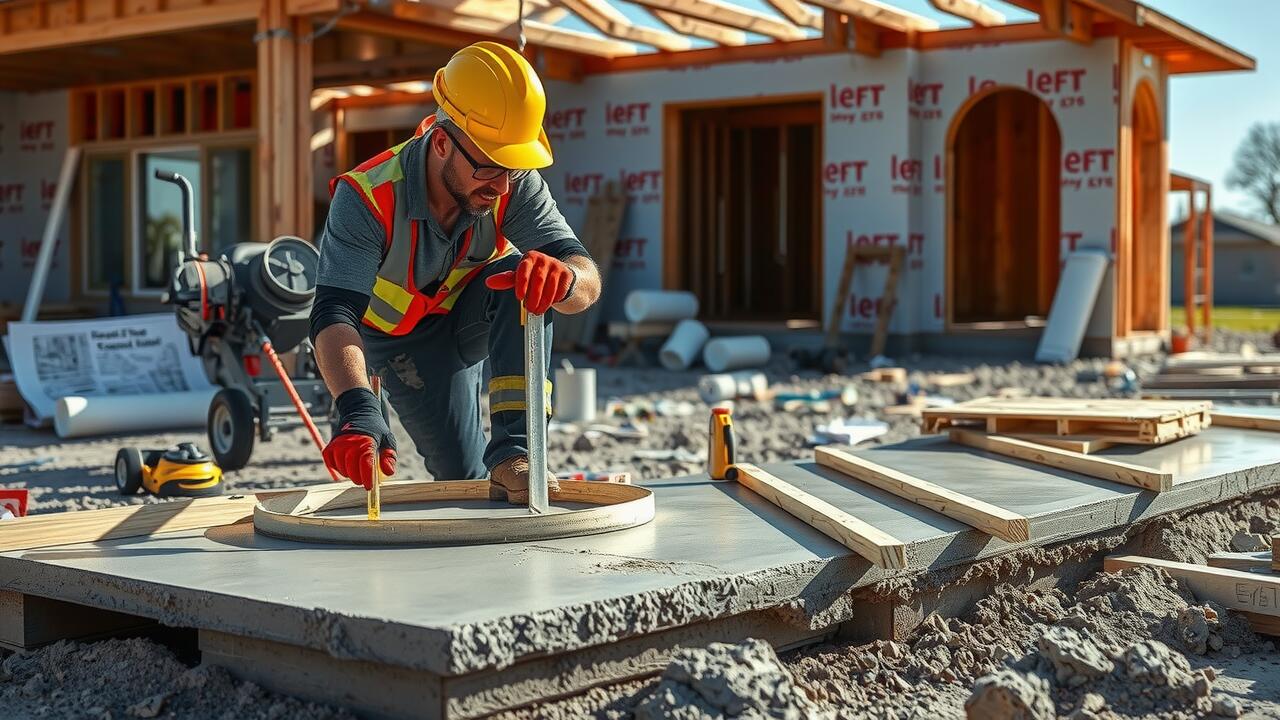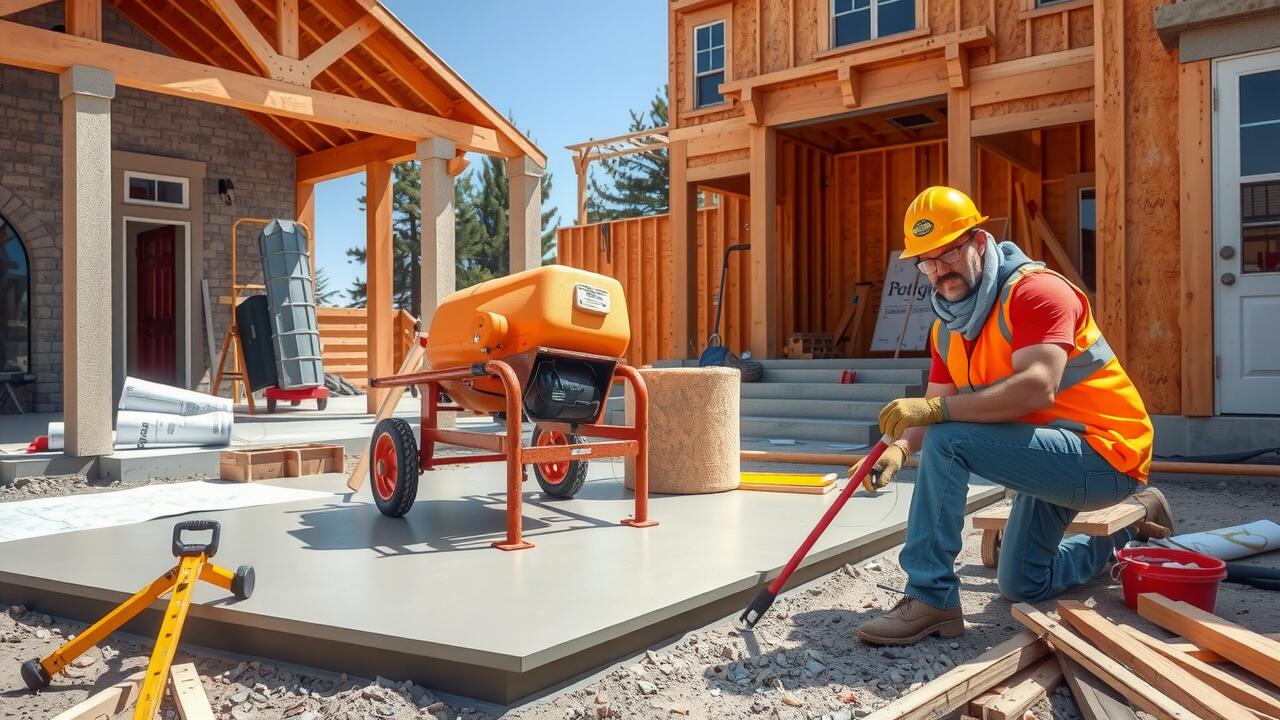Ignoring Weather Conditions
Weather conditions play a crucial role in the success of any Concrete Slab Installation. Extreme temperatures, whether hot or cold, can significantly affect the curing process and overall strength of the concrete. Pouring concrete during a heatwave can lead to rapid evaporation, compromising the integrity of the slab. Similarly, low temperatures can slow down the curing, increasing the risk of cracking and weakening the finished product.
Planning for seasonal challenges helps mitigate the risks associated with unfavorable weather. Monitoring forecasts in advance allows for adjustments to the installation schedule, ensuring that proper protective measures are implemented when necessary. Using insulated blankets during colder months or misting systems in hot weather can aid in maintaining optimum conditions for the best results. Being proactive about weather considerations can lead to a more successful Concrete Slab Installation and long-term durability.
Planning for Seasonal Challenges
Weather conditions play a crucial role in the success of Concrete Slab Installation. Extreme temperatures can affect the setting and curing process, leading to cracks and weakened structures. For instance, pouring concrete during high heat can lead to rapid evaporation of moisture, while cold temperatures can result in slow curing times and potential freezing of the mix. Understanding the seasonal challenges in your region allows for better planning, whether it involves adjusting the timing of the pour or incorporating additives that can modify the curing process.
Monitoring local weather forecasts can provide valuable insights into upcoming conditions that may impact the installation. Contractors should also consider using protective coverings for the slab in unpredictable weather, especially in transitional seasons where temperature and humidity can fluctuate significantly. Preparing for these seasonal changes not only improves the quality of the concrete slab but also helps avoid costly delays and repairs in the future.
Improper Mixing Techniques
Improper mixing techniques can lead to significant issues during concrete slab installation. It is essential to achieve the correct consistency and ratio of water to cement to ensure a durable slab. If the mix is too dry, it may compromise the strength of the concrete, resulting in cracking and structural failures. Conversely, a mix that is too wet can lead to segregation and weaken the overall integrity of the installation.
Understanding the appropriate mixing methods is crucial for successful concrete slab installation. Using a mechanical mixer can provide a more uniform blend compared to manual mixing, leading to better performance. Additionally, it’s important to incorporate additives as recommended, which can enhance the properties of the concrete. Paying attention to these details during the mixing process ensures that the resulting slab meets the desired strength and durability standards.
Ensuring Proper Mixing Ratios
Achieving the proper mixing ratios in concrete is essential for successful concrete slab installation. The general guideline is to follow a standard mix ratio of 1 part cement, 2 parts sand, and 3 parts gravel. Adjustments may be necessary based on specific project requirements, such as the desired strength or exposure conditions. Using precise measurements ensures that the concrete achieves optimal strength and durability, avoiding risks like cracking or early deterioration.
Inaccurate mixing can lead to various complications during and after the concrete slab installation process. For instance, too much water can weaken the mix, while insufficient cement may compromise its bonding properties. It is crucial to use reliable tools such as a calibrated scale for measuring materials. Regularly checking and adjusting the mix per environmental conditions, like humidity and temperature, will further enhance the overall quality and longevity of the installed slab.
Inadequate Curing Practices
Curing is a critical phase in the concrete slab installation process that often gets overlooked. Many individuals assume that once the concrete sets, the job is complete. However, without proper curing, the slab may lose strength and durability. Insufficient moisture and temperature control during this period can lead to cracking and surface issues, which compromise the integrity of the installation.
To ensure effective curing, it is essential to keep the concrete surface moist for an adequate duration. Utilizing wet curing methods, such as covering the slab with wet burlap or plastic sheeting, can retain moisture and regulate temperature. Implementing curing compounds that help maintain moisture is another viable option. Following these practices will enhance the resilience of the concrete slab installation and extend its lifespan.
Techniques for Effective Curing
Effective curing is essential for ensuring the durability and strength of concrete slabs. After the concrete has been poured, it is important to maintain adequate moisture levels to prevent cracking and surface deterioration. Methods such as covering the slab with damp burlap or plastic sheeting can help retain moisture. Additionally, applying curing compounds can create a protective film to keep the surface hydrated. Monitoring temperature and humidity can guide adjustments to these techniques, ensuring optimal conditions for curing.
Timing also plays a crucial role in successful concrete slab installation. Curing should begin immediately after finishing the surface and continue for an adequate period, typically around seven days for most applications. This duration may vary depending on environmental factors and the specific type of concrete used. Maintaining consistent moisture and temperature during this time allows the concrete to gain strength gradually, resulting in a solid foundation for any structure built on it.
FAQS
What are some common mistakes made during concrete slab installation?
Common mistakes include ignoring weather conditions, improper mixing techniques, and inadequate curing practices.
Why is it important to consider weather conditions when installing a concrete slab?
Weather conditions can significantly affect the curing process and overall strength of the concrete, making it essential to plan installations around seasonal challenges.
What can happen if the concrete is not mixed properly?
Improper mixing techniques can lead to inconsistent strength, reduced durability, and an increased risk of cracks or other structural issues in the concrete slab.
How can I ensure proper mixing ratios for my concrete?
It’s important to follow the manufacturer’s guidelines, use measuring tools for accuracy, and thoroughly mix the ingredients to achieve the desired consistency and strength.
What are effective techniques for curing concrete slabs?
Effective curing techniques include keeping the slab moist through methods like water spraying, using wet burlap, or applying curing compounds that seal in moisture for an extended period.

